Well it’s not the government doing this it’s private insurance companies. You’re free to shop around or start your own insurance company. This makes me feel much better about gatekeeping healthcare. 🦅🇺🇸
lightrush
- 16 Posts
- 68 Comments

 1·17 days ago
1·17 days agoThe repair:
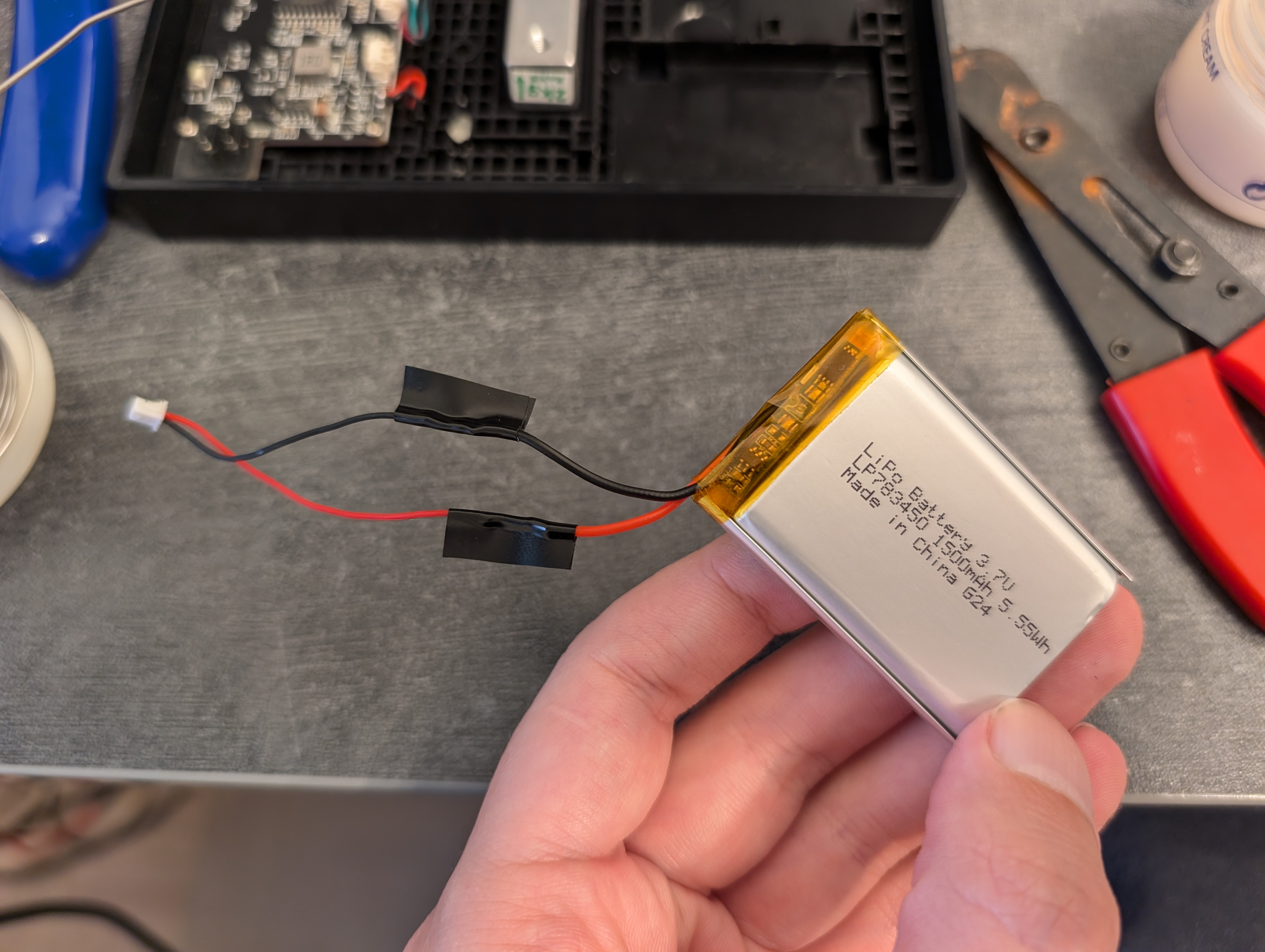
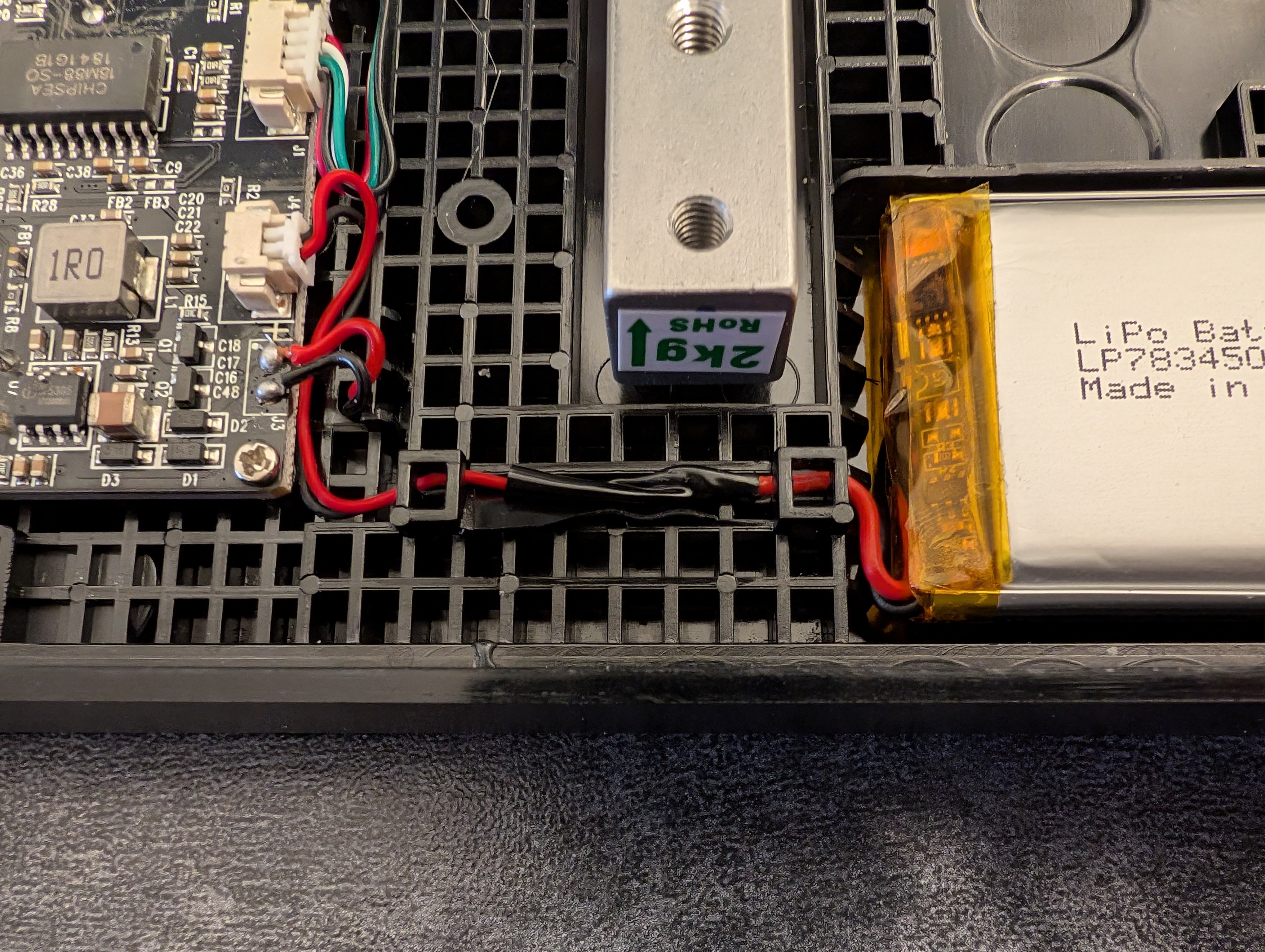

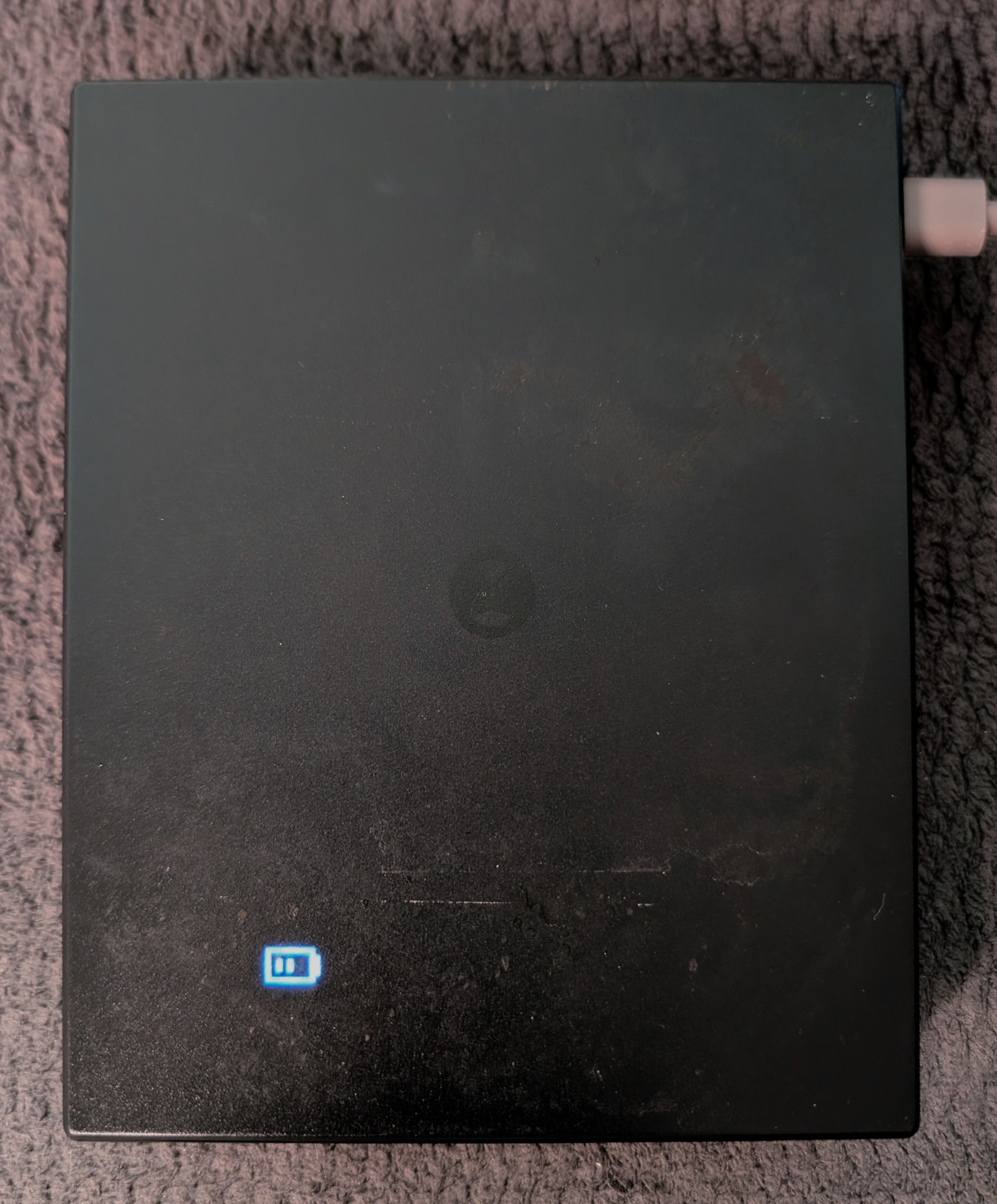
It’s not exactly trivial if you have to change the connector of the replacement battery, but it’s not difficult either. AAA batteries would be way simpler and safer for most people.

 1·18 days ago
1·18 days agoAn army surplus ammo can with its gasket removed.

 1·18 days ago
1·18 days agoYeah, if the cells are standard, available and easy to replace and safe if abandoned, it’s not a huge deal replacing them every few years.

 3·18 days ago
3·18 days agoEspecially now that NiMH rechargeables are so affordable and power dense.

 71·19 days ago
71·19 days agoTBH, this is a risk for all “value” devices that don’t have to pass NA/EU electrical certification. No cert means the cell can be whatever part was cheap and alright enough. Longer term reliability without specific testing isn’t obvious. Every now and then I fall into the rabbit hole of trying to remember all the different devices with potentially questionable cells. The occasion today is likely to trigger another sweep.
While true for the component itself, there’s material difference for any caps surrounding it. Sure the chipset would work fine at 40, 50, 70°C. However electrolytic capacitors lifespan is halved with every 10°C temperature increase. From a brief search it seems solid caps also crap out much faster at higher temps but can outlast electrolytic at lower temps. This is a consideration for a long lifespan system. The one in my case is expected to operate till 2032 or beyond.
I don’t think other components degrade in any significant fashion whether they run at 40 or 60°C.
Unfortunately I didn’t take before/after measurements but this thick plastic sheet cannot be good for the chipset thermals. 🥲
Huh, interesting. I had no idea. Well I don’t need it to be anywhere faster than 100M. USB2 can definitely do that. Closer to 200M. With that said, the latency is more important if you’re gonna do anything like Steam Link.
Found the GNOME developer.
Ads? I thought the Shield didn’t have any…
It’s a Chromecast with Google TV (CCwGTV) wich itself is a dongle. It’s connected to a Plugable USB-C PD hub - another dongle. The white bit sticking to the left from the hub is a TP-Link UE300 Ethernet adapter - yet another dongle. Finally there’s an SD card inserted in the Plugable hub as well as an HDMI coupler hooked to the other end of the CCwGTV which allows connecting an HDMI cable to it.
I’ve been thinking about Shield TV but I hear it’s not great with updates.

 2·2 months ago
2·2 months agoIt is. I just wish it wasn’t this expensive. Will have to live with it for a while. 😅

 1·2 months ago
1·2 months agoSo generally Pegatron. :D I used to buy GB because it was made in Taiwan when ASUS became Pegatron and went to China. Their quality decreased. GB used to put high quality components on their boards in comparison. But now GB is also made somewhere in the PRC. I’ve no idea where MSI are in terms of quality. We used to make fun of them using the worst capacitors back in the 90s/00s. Looking at their Newegg reviews, their 1-star ratings seem lower proportion compared to Pegatron brands and GB. Maybe they’re nicer these days? The X570 replacement I got for this machine is an ASUS - “TUF” 🙄

 2·2 months ago
2·2 months agoThey feel a bit like a mix between DSA and laptop keycaps.

 4·2 months ago
4·2 months agoWhat do you buy?

 18·2 months ago
18·2 months agoI think I found the source of the liquid @abcdqfr@lemmy.world. The thermal pad under the VRM heatsink has begun to liquefy into oily substance. This substance appears to have gone to the underside of the board through the vias around the VRM and discolored itself.

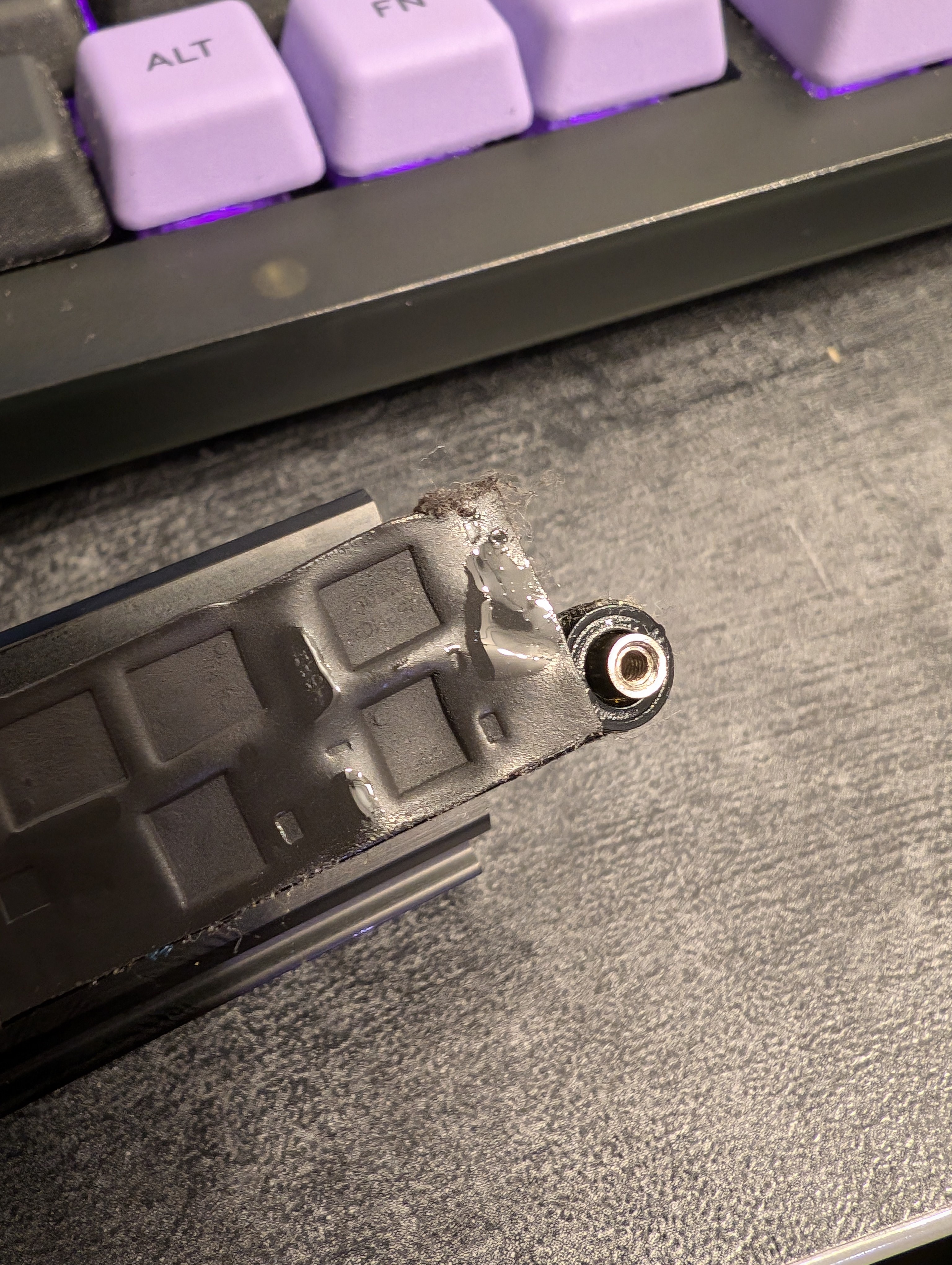
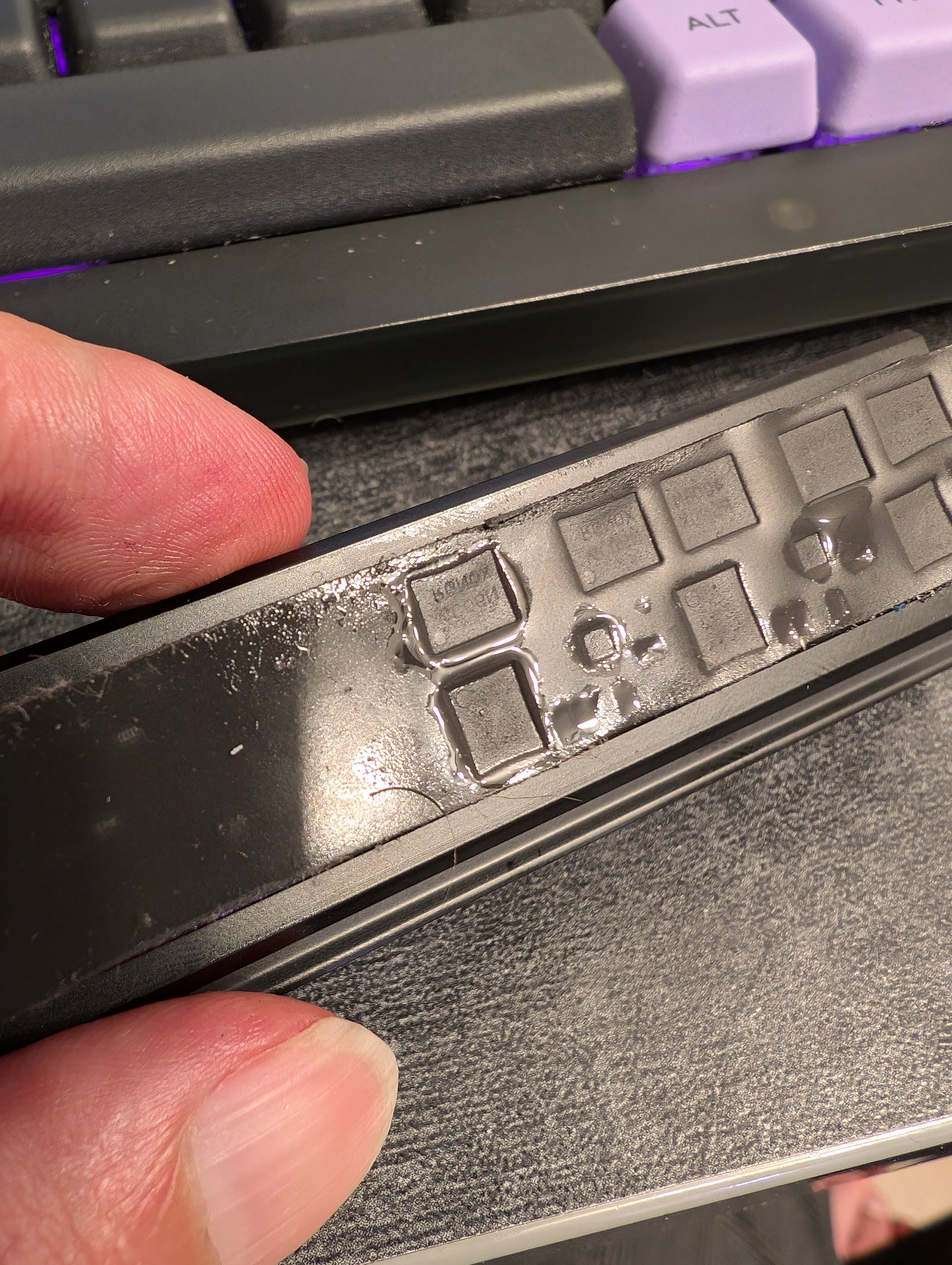
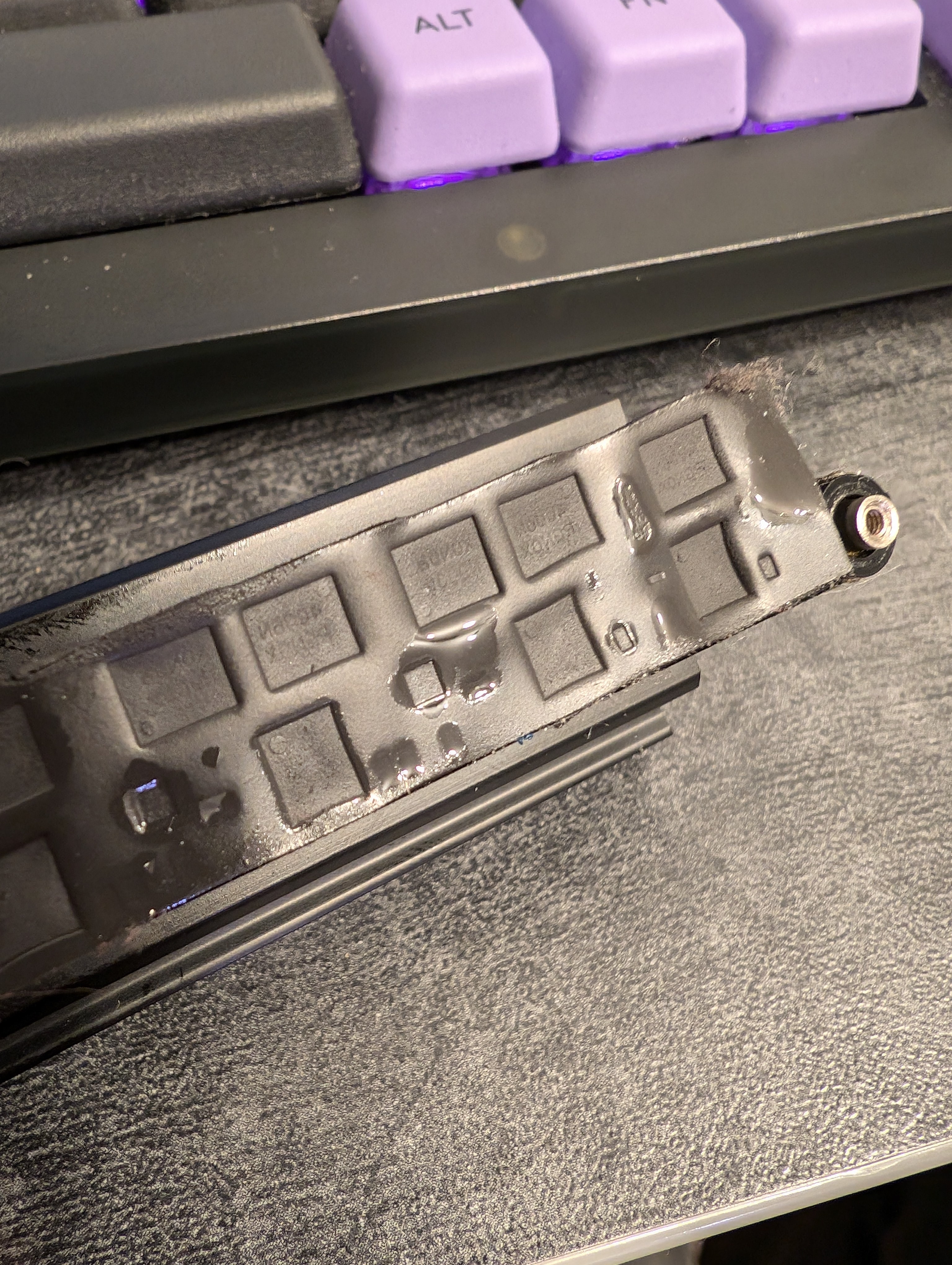
Some rubbing with isopropyl alcohol and it’s almost gone:
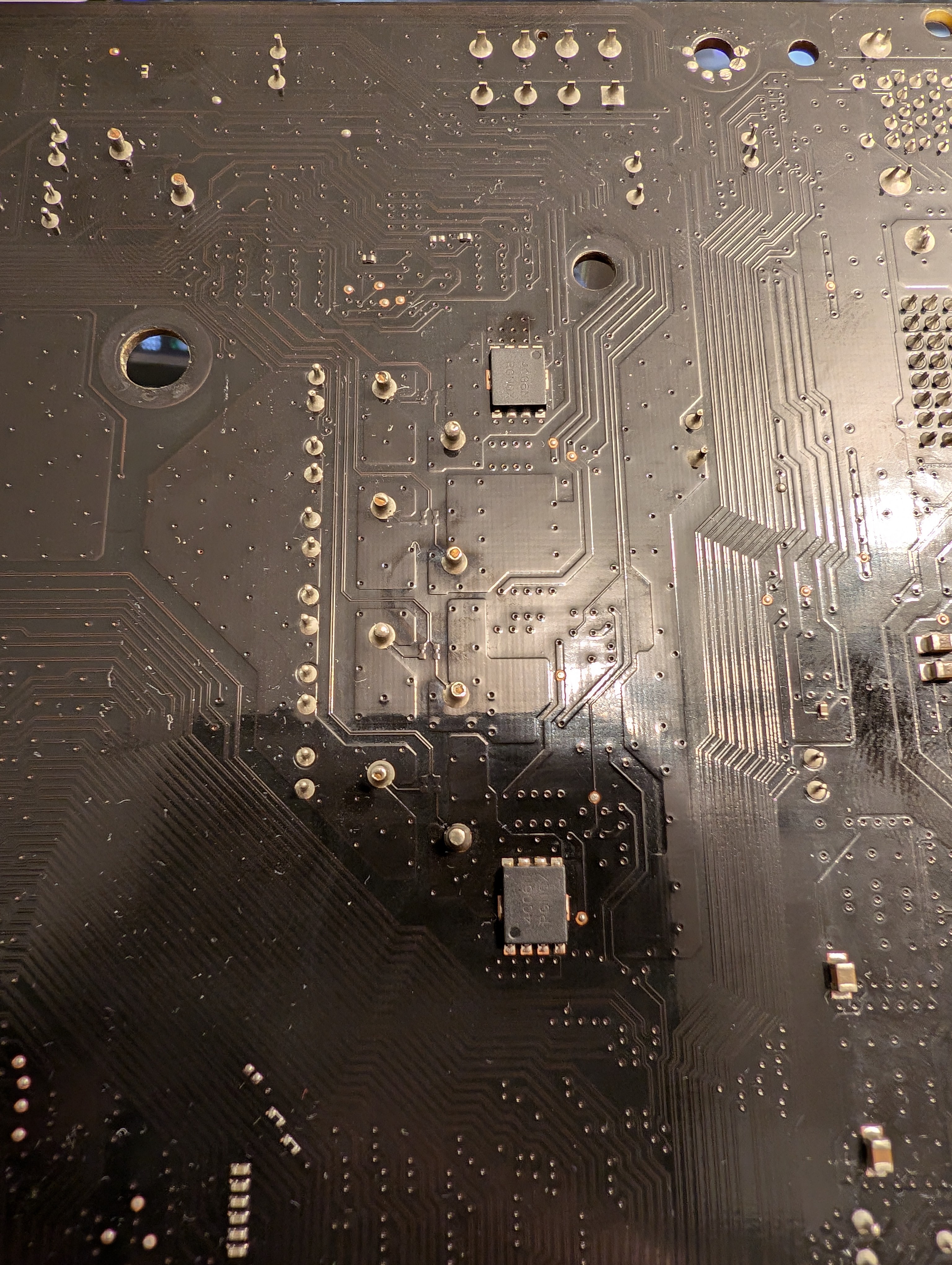
Perhaps there’s still life left in this board if used with an older chip.









Jesus fucking Christ, I was just talking to a friend about how big corporations with hundreds of thousands of employees resemble centrally planned economies, and how consolidations creates them all around us and the only thing stopping them from becoming fewer is the attempts of some governments that haven’t been regulatory-captured yet to stop it. But regulatory-capture increases with wealth accumulation so if you keep running the system, it tends to total central planning. I haven’t read Marx and neither has he.
On a separate but related point - what stops the system from being somewhat disrupted by labor in a way that redistributes huge amounts of the accumulated wealth, restoring the regulatory regime in favor of labor and restarting the cycle from that point, then repeat. In other words, what’s stopping it from doing a depression-FDR-redistribution every 100 years? I can absolutely see the inevitable end without labor intervention but to my current brain it seems possible to maintain it with. Is this wrong in some obvious way?